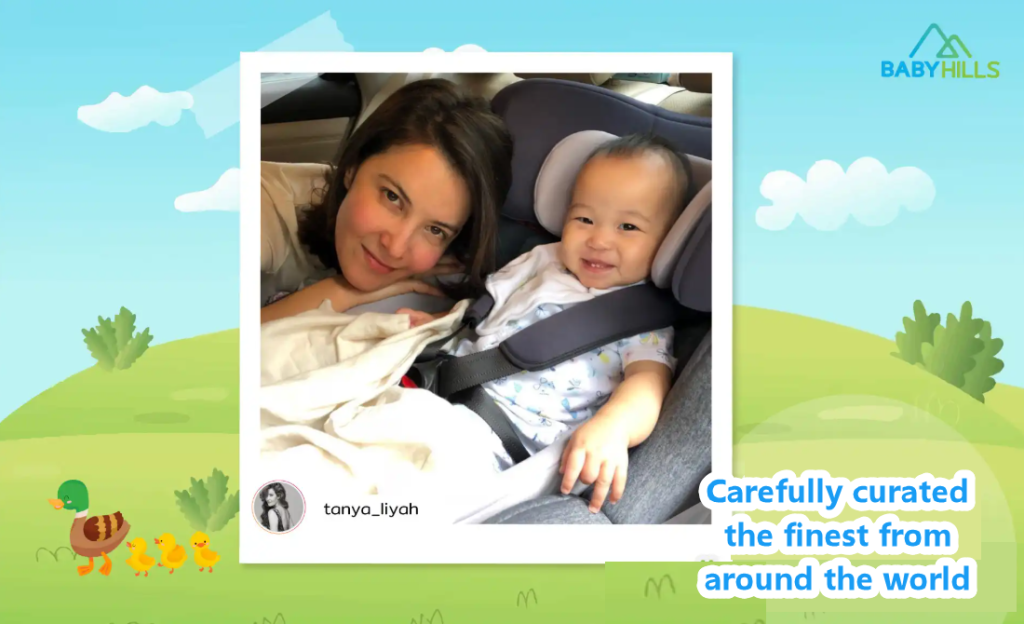Choosing the Best Booster Seat for Children 5 and Up: A Parent’s Complete Guide

Introduction
As kids grow, their safety considerations change — particularly when travel is involved. For parents whose child is at least five years old, it is time to start shopping for that perfect booster seat. A (car seat) Babyhillsthailand-car seat does more than keep your child safe on the road though — they’re safety gear which give you a peace of mind and also protect your child to prevent them from cold weather. This all-encompassing guide will take parents through everything they need to know to determine the best booster seat for their child.
Booster Seats Are Crucial for Little Kids Over 5
Around age five, kids generally outgrow their forward-facing car seat but they’re still too small or premature to fit in a normal seat belt perfectly. Booster seats fill this gap by elevating the child to an appropriate height for the vehicle’s seat belt to fit properly across their chest and lap. Without the booster, the seat belt rides up too high on the child’s neck or cuts across their stomach during an accident, leading to serious injuries.
Booster seats don’t just meet federal safety standards—they also teach children the importance of being buckled up, so even when they outgrow their booster seat, the habit still sticks with them. Parents can be confident that they are “Fusing Safety with Love”, as they follow best practice safety protocol in combination with pursuing additional advancements.
What Are the Main Features to Look For in a Booster Seat?
1. High-Back vs. Backless Booster
High-back boosters include an extra head, neck, and side-impact protection for older kids’ tall torsos (and can be a better option for kids in cars without high seat backs or headrests). Backless boosters are light and easy to carry from one car to another, a good fit for families on the go. Both are safe if they meet safety standards, but your car and your child’s comfort should dictate your choice.
2. Seat Belt Positioning
The main purpose of a booster seat is to get the proper placement of the seat belt. First, the lap belt should fit snugly across the upper thighs (not the stomach) and the shoulder belt should cross over the middle of your chest and shoulder. Parents should also check how well a booster seat positions the belt in relation to their child’s body before purchasing.
3. Weight and Height Limits
All car seat have individual weight as well as size restrictions. The weight and height range of the child should fall within these limits for specific safety requirements. Most booster seats are designed for children 40 to 100 pounds, depending on the manufacturer’s specifications.
4. Latch System Compatibility
Most booster seats are equipped with LATCH (Lower Anchors and Tethers for Children) connectors that secures the seat to the vehicle seat for extra solid stability. Although booster seats do not need LATCH for safety the way harnessed car seats do, this feature will keep the seat from swimming around when no one’s in it.
5. Comfort and Convenience
Riding in the car can be rough for children, so set your child up with a pair of padded seats, adjustable arm rests and cup holders. A cushy *car seat* helps make it more appealing for kiddos to ride in a booster longer.
Safety Standards and Certifications
When selecting a booster, you want to make sure and find safety certification labels that show compliance with national or international crash test standards. In some countries, booster seats are subjected to testing before they can be sold. Parents should resist hand-me-down boosters that might fail to meet today’s standards or have hidden damage.
You should also be sure to register your booster seat with the manufacturer. This will ensure you’re up-to-date on any recalls or safety notices for your child’s car seat.
Tips for Parents When Transitioning to a Booster Seat
- Monitor Readiness Signs: A child is ready for a booster when they have outgrown the weight or height limit of their harnessed car seat, and can sit up properly, with their back against the vehicle seat back cushion without slouching for the entire drive.
- Lead by Example: Children model after their parents. Dickering -Automatic force says, each time you put on your safety belt in normal use, you are setting an example of the importance of safety.
- Riding Consistency: Every Day is a key. Even a short distance is too far for your child to ride in their booster seat.
- Teach the Child: Tell him why the booster seat is necessary so he can be more willing to cooperate.
Common Mistakes to Avoid
- Graduating Too Early: Some parents graduate their child into a booster seat before their body is ready. Always be sure to follow the age, weight and height guidelines.
- Misuse of a Seat Belt: You want to make sure that your child does not put the shoulder belt behind their back or under their arm.
- Not Compatible with Vehicle Seating: Not all seats are ideal for every vehicle. Always check compatibility before buying.
Conclusion
Choosing the right booster seat is one of the most critical safety decisions you will make as a parent once your child outgrows a front-facing car seat. An appropriate car seat (Babyhillsthailand-car seat) not only protects your child, but also adds to your peace of mind while driving beyond the required safety measures. That is, if you take certain things like belt positioning, comfort, rating and vehicle compatibility into account. In the long run, the time you spend researching and selecting a booster seat is an investment in your child’s health and security.
